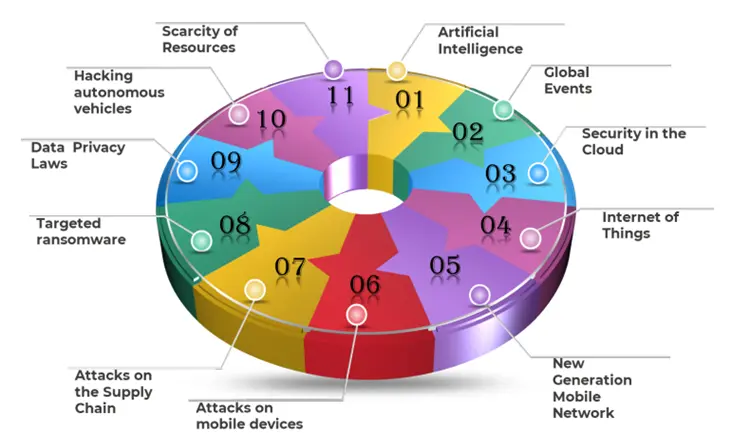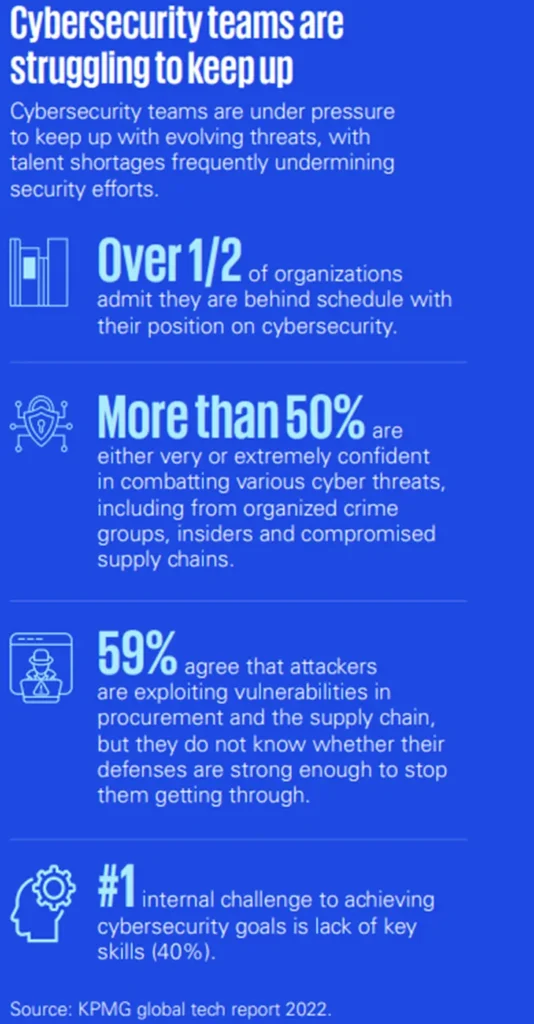Cybersecurity in the Digital Enterprises
- March 3, 2024
- Posted by: Sabyasachee Panda
- Category: Technology ,

The COVID-19 pandemic has led to a massive increase in remote workers. The increased remote work has also upped the risk of cyber threats in many organisations. Cybercriminals are taking advantage of misconfigured cloud security measures and insecure home devices and networks to access a company’s sensitive information. Social engineering attacks are not new cybersecurity threats, but with increased remote work, these attacks will no longer be just simple emails mimicking communications. Additionally, remote workers are often the target of phishing attempts. To mitigate risks associated with remote work, companies are implementing strict cybersecurity frameworks. These cybersecurity trends are bound to make organisations increase their security measures. It is expected that companies will be spending more on developing a rigid cybersecurity plan. They will deploy experienced and skilled cybersecurity professionals for the same.
Enterprises move to cloud, mobility, artificial intelligence, and automation have resulted in newer threats such as – vulnerabilities in the cloud, vulnerabilities in mobile devices, ransomware, lack of data management and lost-attack procedures are inadequate.
Top Cybersecurity Trends for 2023
Stay ahead of evolving threats and safeguard your digital assets with our insight into the top cybersecurity trends for 2023. Discover the latest strategies and technologies shaping the future of digital security.

To respond to regulatory requirements and the challenges of cybercriminals with increasingly ingenious and creative attacks, the demand for cybersecurity experts and talent has increased considerably. Many organisations lack cybersecurity talent, knowledge, and expertise – and the shortfall is growing. Overall, cyber risk management has not kept pace with the proliferation of digital and analytic transformations, and many companies are unsure how to identify and manage digital risks.
To face the challenge, regulators are increasing the targeting of corporate cybersecurity resources, generally with the same level of oversight and focus applied to credit and liquidity risks in financial services and to operational and physical security risks in critical infrastructure. It is anticipated that it may increase the demand for talent and the demand from regulators. Understanding trends, especially cybersecurity threats, means staying aware of the world around us.
Data Privacy Laws
At a time when we share our personal information across almost every service, governments have started taking strict measures on data security. By the end of 2023, 75% of the world’s population will have their personal information protected by modern data privacy legislations established by various data protection authorities. Consumers will be able to know what kind of data is collected about them and for what purpose. Organisations will begin to manage various data protection laws and will focus on automating their approach to data privacy.
AI Impact on Cybersecurity
Artificial Intelligence will continue to have a significant impact on the cybersecurity environment, taking on an important role in businesses, creating real-time solutions faster than a human. AI can perform various security-related tasks, including data analysis and machine learning. AI can also be used by cybercriminals. In cybersecurity, incorporating automated AI-based solutions is a necessity currently to save resources and for being more reliable against automated attacks.
Deepfake videos are popular on social media, and cybercriminals, knowing this, use them to manipulate information, destroy credibility and pose as reliable sources. According to experts, deepfake technology is currently the most worrying in the use of artificial intelligence, as it can have significant effects on terrorism and cybercrime. It is estimated that more cybersecurity themes will be made available with AI systems, year after year.
Every year, technology evolves and shapes the way we conduct business, manage tasks and store data. The digital environment and opportunities for attacks are constantly changing. Thus, it is important to be aware of technological trends, especially regarding cybersecurity, which currently have significant importance in management and business continuity. The prevention and defence of cybersecurity is intrinsically related to identifying trends, technologies, and factors of potential threats.
Trainings on Cybersecurity
With technology becoming increasingly important to business operations, the threat of cyber-attacks continues to rise. While comprehensive training does not guarantee the complete prevention of cyber-attacks, such training can enhance an organization’s cybersecurity posture and make it better equipped to prevent and deal with an unforeseen data breach effectively.
As data breach incidents are more often caused by human negligence rather than by a criminal attack, a risk-aware workplace culture goes a long way toward pre-empting data breach incidents by identifying potential security risks. When organizations educate their employees on security vulnerabilities and the damaging repercussions of cyber-attacks, constructive strategies can be implemented to limit cybercrime infiltration and prevent employees from unwittingly complying with cybercrime activities.

